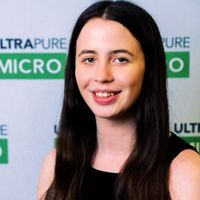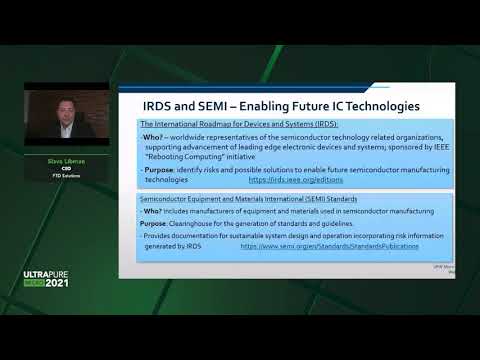
Orla McCoy
Global Water Intelligence
Collaborators
Tags
Particle PrecursorsChemicalsMetrology and Analytical TechnologyFiltrationExpert Q&A – Driving Yield and Reliability Solutions in the Semiconductor Industry
In the June 2023 UPM webinar, six esteemed semiconductor industry experts discussed challenges and cutting-edge progress for liquid contamination control. Here are Q&A responses from during and after the webinar.
Share this insight
The audience had so many questions for our panel that the speakers addressed remaining queries after the webinar. Along with the subsequently delivered Q&A below, please find the main part of the webinar recording here.
The panel discussion was brought together by Bob McIntosh, Principal of Enviro-Energy Solutions; Gary Van Schooneveld, President at CT Associates; Ashutosh Bhabhe CEO and Co-Founder at 14Si Solutions; Nabil Mistkawi, Principal Engineer/Technologist at Samsung Austin Semiconductor; Mustafa Badaroglu, Principal Architect/Engineer at Qualcomm and Jochen Ruth, SLS Director of Microelectronics Europe, Pall.
Audience Q&A
1: How many UPW cleaning are taking place today in a typical state-of-the-art semiconductor fab, and is that number expected to increase substantially with the next generation of chips?
There is no typical number of UPW cleanings that take place in a fab, as it varies substantially based on the manufacturer, product, and equipment used in the process.
The technical projection shows that UPW cleaning steps will not decrease, and increased demand is expected (though the exact rate of increase is debated) due to the complexity of the transistors, the growing importance of back-side power, and the continuing transition to advanced node applications. There will be added steps which utilize other cleaning chemicals like isopropyl alcohol (IPA).
There will be continued downward pressure for contamination in all chemistries. There could be an expansion of specifications, tightening of existing specifications (i.e., mean and standard deviation), and a need for better monitoring solutions.
2: For the future, what technology advances are needed in ion exchange technology to ensure the removal of molecular size particles?
Whilst there is no reason to assume ion exchange will be the primary technology to remove molecular size contamination, we can focus on the molecular-level contamination released by ion exchange resin. It is possible to measure the concentration of these contaminants using nebulization and condensation particle counting instruments to determine molecular weight distributions. Techniques include Liquid Chromatography – Organic Carbon Detection (LC-OCD) with composition identification using FTIR and Raman Spectroscopy. These instruments should be beneficial during the development of new, low molecular release ion exchange resins.
3: If particles are potentially in the molecular level, then how can a pre-filter or a UF capture them?
These types of contamination have not been a focused target for removal, but the SEMI UPW Task Force, in collaboration with resin and filter suppliers, is developing a test method for measuring the retention capabilities of purification devices to remove molecular materials (i.e., particle precursors). The method can be used by filter/purification device manufacturers in their product development.
Existing methods allow filter suppliers to apply targeted modifications on the membrane surface to remove cations, anions, or organic species which present at the molecular/ionic level in water and chemicals. However, identification and quantification can make the solution more specific.
Question 4: Could anion electrodeionization be used to remove last anions and cations including 1-3nm PS-sulfonates or Quats and Me3NH + etc?
It is an interesting question to consider and based on the techniques being developing for SEMI particle precursor retention testing, this removal mechanism could be evaluated.
Question 5: Is there a figure on the average amount of UPW needed per 8 inch wafer during wafer start?
Historical data saw averages of 500 gallons per wafer (GPW) for 8-inch wafers, vs. 1200 GPW for 12-inch wafers. However, the amount of water consumed is not only affected by wafer size, but specific chip type, its integrated manufacturing process, and other factors.
Question 6: Is it a fact that a cleaner water is more corrosive. How is corrosiveness handled during sensitive process steps? What actions can be taken to avoid problems with corrosion when using extremely clean water.
Whilst not exactly an example of corrosiveness, UPW has very high resistivity (low conductivity). On the substrate, there is a chance of charge accumulation and discharge, which is mitigated by the use of ‘functionalized’ water (like CO2 water, ammonia water, etc.) which makes the water conductive without worsening its cleanliness.
Share this insight
Related insights
Related resources
Device Yield and Reliability: Exploring Solutions for the Semiconductor Industry

Deconstructing the Challenges of Facility 2.0: Yield & Reliability Drivers

Deconstructing the Challenges of Facility 2.0: Device Complexity Drives Facility Complexity



